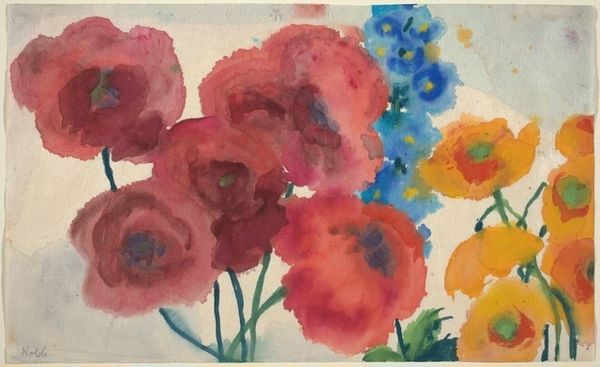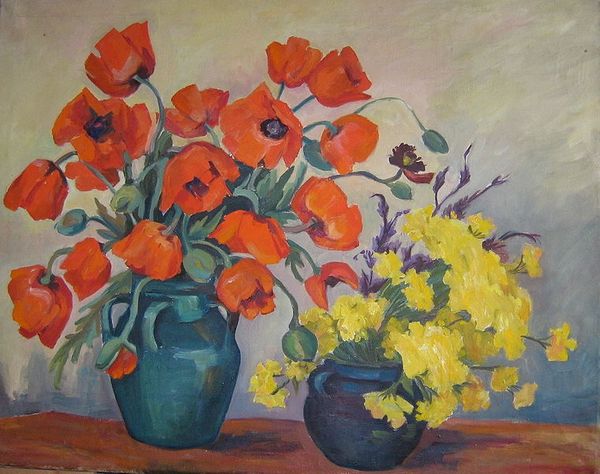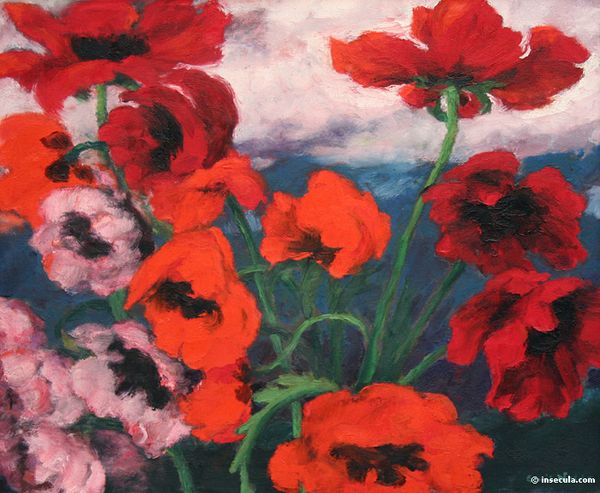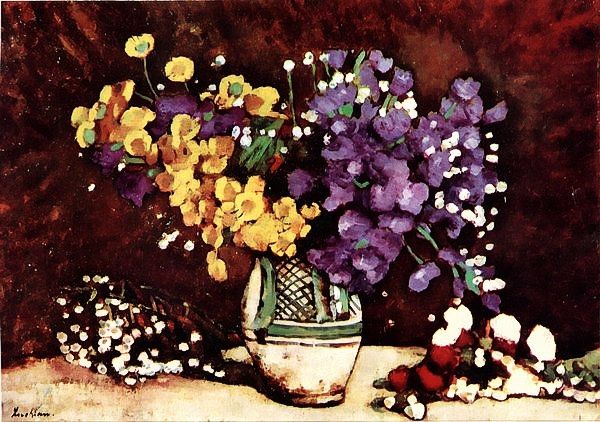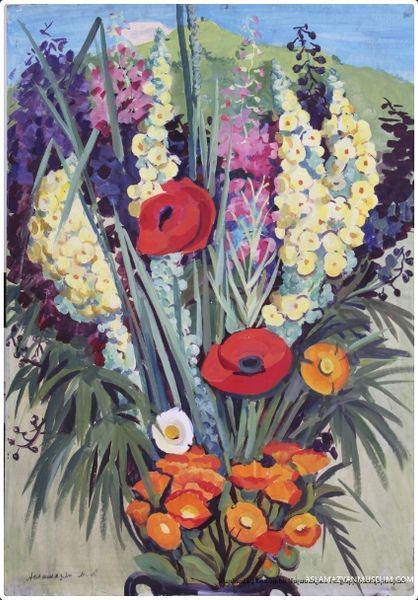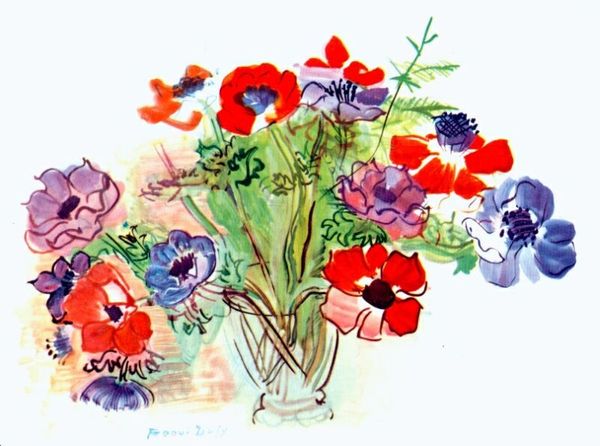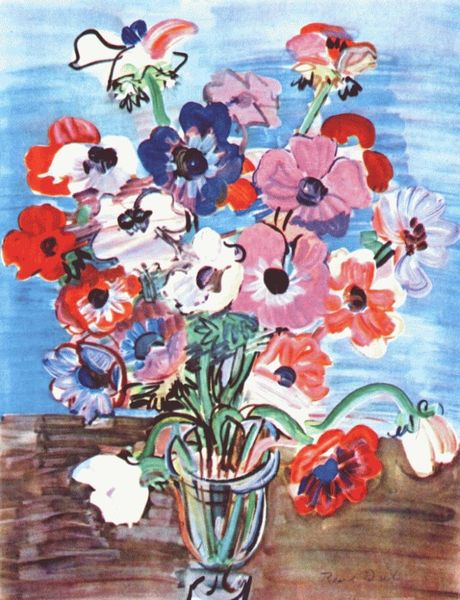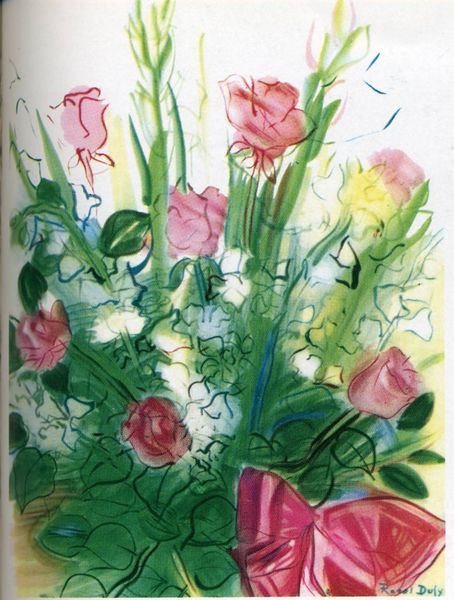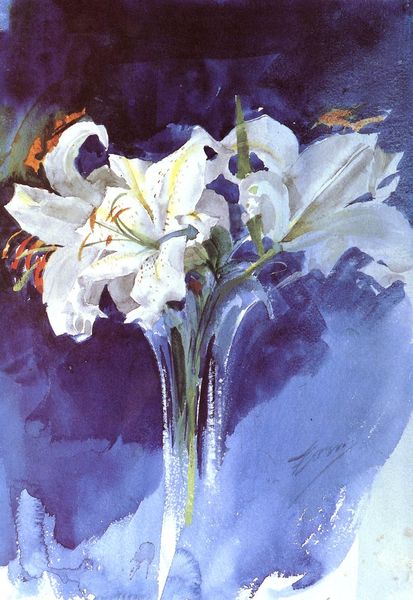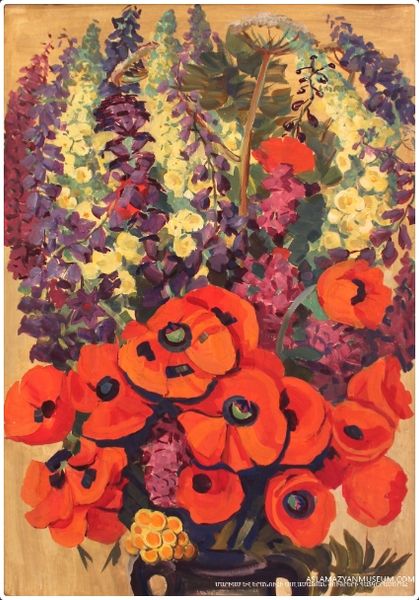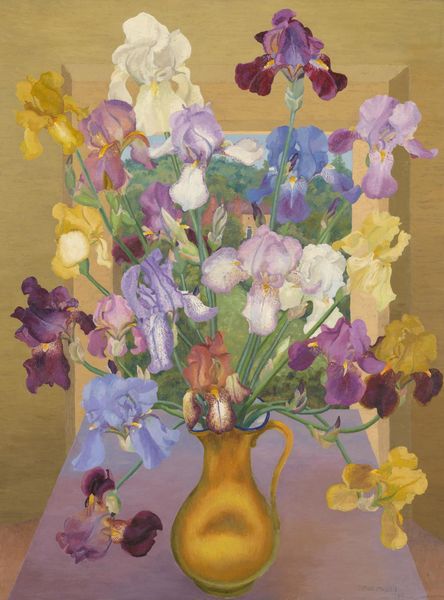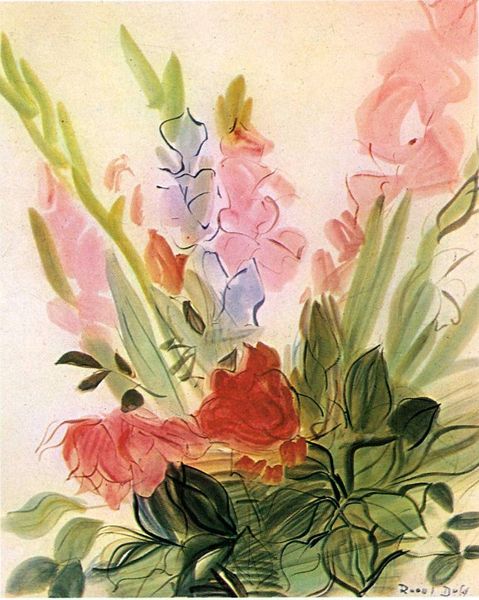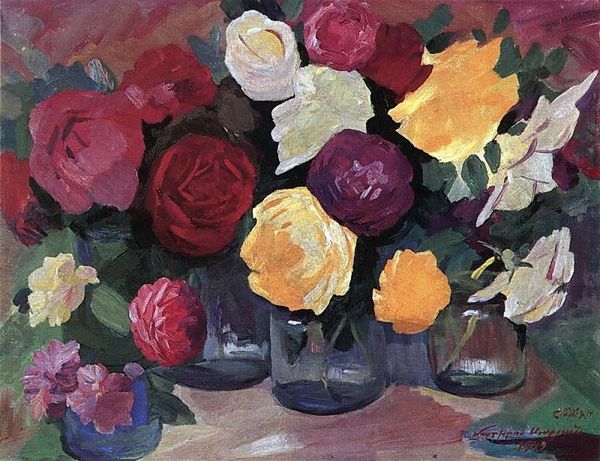
painting, watercolor, impasto
#
painting
#
watercolor
#
impasto
#
expressionism
#
watercolour illustration
#
post-impressionism
#
watercolor
Copyright: Emil Nolde,Fair Use
Editor: Here we have Emil Nolde's "Irises and Poppies," a watercolor painting done in his signature impasto style. The colours are really intense; what strikes me is how these beautiful, vibrant blooms seem almost defiant. What do you see in this piece? Curator: Beyond the visceral, luminous colour, consider Nolde's own biography. As an artist initially aligned with Die Brücke, he later faced Nazi condemnation. His art, labelled 'degenerate,' reflects a period rife with repression. The bold, almost clashing colours can be viewed as a defiant expression against attempts to suppress individuality and creative freedom. Editor: So, you're saying the vibrancy is almost a political statement? Curator: Precisely! Think of how the Expressionists, generally, used colour not to mirror reality, but to project inner emotion. Given the socio-political context of Nolde's time, is it possible to see the aggressive brushstrokes and saturated colours as reflecting his own inner turmoil, a visual protest against the stifling atmosphere of the era? Editor: That makes a lot of sense. I guess I hadn't considered the act of creation itself as a form of resistance. How do you think this adds meaning to this painting? Curator: This knowledge shifts our perspective. We no longer just see a pretty floral scene, but rather, a potent act of self-assertion. It shows the capacity of art to be a vehicle for dissent and the embodiment of individual expression against oppressive forces. And for you, how does understanding the Expressionist style through such an intersectional perspective influence the way you will approach looking at and curating art? Editor: I am beginning to see art can offer insights to a world in chaos! I now realize how powerful artworks can be, both visually and politically.
Comments
No comments
Be the first to comment and join the conversation on the ultimate creative platform.
